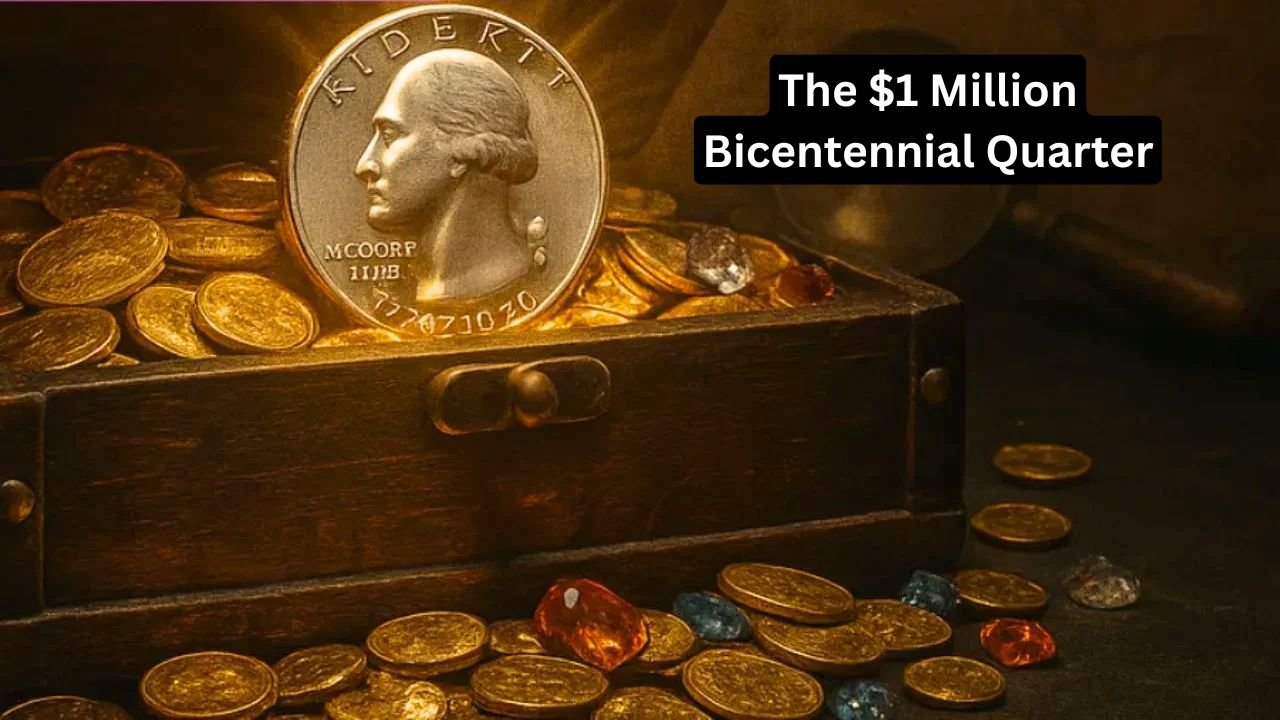A Coin Worth More Than Its Face Value
Have you ever checked the change in your pocket? Most people don’t think twice about the coins they get at the store, but one special quarter could be worth a fortune. The Bicentennial Quarter, minted in 1976 to celebrate America’s 200th birthday, is usually just worth 25 cents. However, some rare versions of this coin have sold for as much as $1 million at auctions. These quarters were made to honor the Declaration of Independence, featuring a unique design with a colonial drummer on the back and the dates 1776-1976. While millions of these coins are still out there, a few have special traits that make them incredibly valuable.
What Makes These Quarters So Special?
Certain Bicentennial Quarters stand out because of minting errors or unique features. For example, some were accidentally struck on silver planchets meant for other coins, making them rare. Others have double-die errors, where the design appears slightly doubled, creating a distinct look. These errors happened during production at U.S. mints in Philadelphia, Denver, or San Francisco. Collectors love these quirks, and they’re willing to pay big money for them. One such quarter, a 1976-S silver quarter in perfect condition, sold for $1 million because of its rarity and flawless state.
How to Spot a Valuable Quarter
You don’t need to be a coin expert to find a valuable Bicentennial Quarter, but you need to know what to look for. Check the date first: it should say 1776-1976. Next, look at the mint mark, a small letter on the coin. A “D” means Denver, an “S” means San Francisco, and no mark means Philadelphia. Quarters with an “S” mark are more likely to be silver, which increases their value. Also, examine the coin for any unusual details, like doubled letters or blurry images. If you’re unsure, a local coin dealer can help. Below is a quick guide to key features:
| Feature | Details |
|---|---|
| Date | 1776-1976 |
| Mint Mark | D, S, or none (Philadelphia) |
| Material | Look for silver (shiny, heavier) |
| Errors | Double-die or off-center design |
Where to Find These Hidden Gems
Bicentennial Quarters are still in circulation, so you might find one in your change at a coffee shop or grocery store. Older relatives might have them tucked away in jars or drawers, as many people saved these coins in the 1970s for their patriotic design. Coin rolls from banks are another good place to look, as uncirculated coins sometimes show up. If you want to hunt for valuable quarters, check flea markets, estate sales, or online marketplaces, but be cautious of fakes. Always verify the coin’s authenticity with a professional before spending money.
What to Do If You Find One
If you think you’ve found a rare Bicentennial Quarter, don’t clean it. Cleaning can lower its value by scratching the surface. Store it in a soft cloth or plastic holder to keep it safe. Take it to a reputable coin dealer or appraiser for a closer look. They can tell you if it’s a standard quarter or one of the rare ones worth thousands or more. If it’s valuable, you might consider selling it at an auction or to a collector. Here’s a quick checklist for handling a potential find:
| Step | Action |
|---|---|
| 1 | Don’t clean the coin |
| 2 | Store it safely |
| 3 | Get it appraised |
| 4 | Consider auction or sale |
Why These Coins Matter Today
The Bicentennial Quarter isn’t just about money; it’s a piece of American history. It reminds us of the country’s 200th anniversary and the excitement of that era. For collectors, finding a rare one is like discovering buried treasure. Even if you don’t find a million-dollar coin, checking your change can be a fun way to connect with history. Next time you pay for a coffee, take a second to glance at your quarters. You never know—you might be holding a small fortune in your hand.
